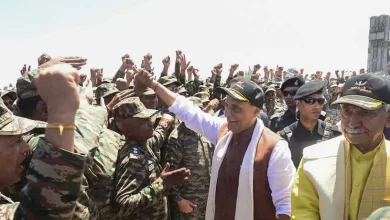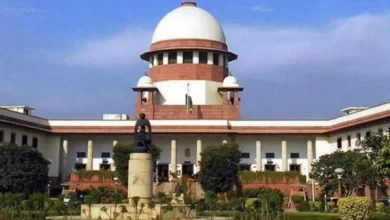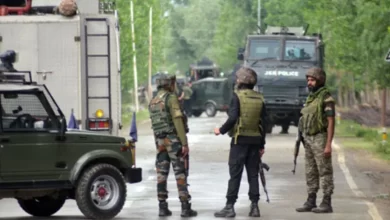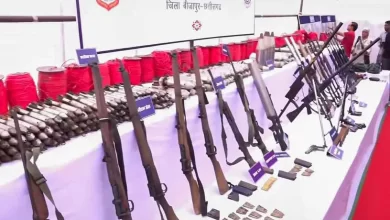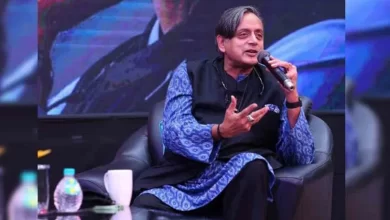Why was Rajpath called a ‘symbol of slavery’ by PM Modi in his speech?

On Thursday, Prime Minister Narendra Modi gave a speech following the unveiling of the 28-feet statue of Netaji Subhas Chandra Bose replacing the one of King George V under the canopy near India Gate. He also inaugurated the ‘Kartavya Path’, a stretch of road from Rashtrapati Bhavan to India Gate which was earlier known as the ‘Kingsway’ before independence and then ‘Rajpath’ since independence.
“Kingsway i.e. Rajpath, the symbol of slavery, has become a matter of history from today and has been erased forever. Today a new history has been created in the form of the ‘Kartavya Path’. I congratulate all the countrymen for their freedom from yet another identity of slavery, in this Amrit Kaal of independence,” said PM Modi during his speech. He asserted that a new history has taken birth with Kartavya Path and that along with Netaji’s statue “will guide and inspire” the country. “People will see the India of the future in them and its energy will instil a new vision for a great India,” said the PM.
PM Modi said that the Rajpath was a symbol of slavery, it was for the British Raj who saw the people of India as slaves and its structure symbolised the same. During the inauguration, he said, today along with its architecture the erstwhile Rajpath’s spirit has also changed. PM Modi also highlighted how steps taken by his government are not just limited to symbols but are now a part of his policies. He then went on to interact and thank all the workers involved in the project, where the PM reportedly also told the workers that he will invite all of them for the January 26, Republic Day parade.
Also read | PM Narendra Modi unveils Netaji Subhash Chandra Bose statue, Central vista project
The Prime Minister’s Office (PMO) also released a statement that read, “These steps are in line with Prime Minister’s second Pran for New India in Amrit Kaal: ‘remove any trace of the colonial mindset’”. It added, that this redevelopment also symbolizes the shift of power from erstwhile ‘Rajpath’ from “being an icon of power” ‘Kartavya Path’ “being an example of public ownership and empowerment.”
These modifications were a part of the ambitious Central Vista redevelopment project that began in February 2021, initiated by the Modi government. The PMO also explained the need to improve the infrastructure citing reasons such as the lack of basic amenities like public toilets, drinking water, street furniture and adequate parking space. Furthermore, there was inadequate signage, poor maintenance of water features and haphazard parking, the statement added.
This was stated in the context of how over the years the Rajpath and the adjoining areas of Central Vista Avenue have been witnessing the pressures of increased traffic of visitors which has added stress on the infrastructure. The statement also indicated that this move would also allow fewer disruptions and minimal restrictions on public movement during the Republic Day Parade and other National events conducted on the ceremonial boulevard.
From ‘Kingsway’ to ‘Rajpath’
Under colonial rule, the 3 km long stretch of road running from the Rashtrapati Bhavan to India Gate was called ‘Kingsway’ and was renamed ‘Rajpath’ post-independence. This road was built as a ceremonial boulevard when the British government decided to move their capital from Calcutta (Now Kolkata) to Delhi. In 1911, King George V and his consort Queen Mary also laid the foundational stone which symbolized the ‘new capital’ of the British Raj, the construction went on for several years thereafter.
The ‘Kingsway’ was built by Edwin Lutyens and Herbert Baker, who were eminent architects and urban planners. The former came up with the idea of building the modern imperial city around the central or “ceremonial” axis. This axis was built from the Great Place (renamed Vijay Chowk) to India Gate by the duo. It was named ‘Kingsway’ to honour the erstwhile Emperor of India, King George V, the name was inspired by the Kingsway in London. A prominent boulevard that was named in honour of King Edward VII, father of King George V.
The centrepiece of Lutyens’ plan was the Raisina Hill complex, which was also home to the Viceroy’s House (now Rashtrapati Bhavan), which reportedly along with the North Block and South Block formed the Imperial Secretariat. Meanwhile, Baker created a circular Parliament House near the Rashtrapati Bhavan which was inaugurated in 1927. The rest of the city was built around this structure and took 20 years to complete the construction which was then inaugurated on February 13, 1931, by Viceroy Lord Irwin.
On August 15, 1947, when India attained its independence from British rule the ceremonial boulevard was crowded with people for celebrations. Subsequently, after independence, the ‘Kingsway’ was given a Hindi name ‘Rajpath’ (a literal translation of ‘Kingsway’) while the adjoining ‘Queensway’ was renamed ‘Janpath’. A year after India became a Republic, in 1951, the Rajpath had become the venue for all Republic Day celebrations and parades over the years that followed. Notably, the first Republic Day celebrations were held at Irwin Stadium (now Major Dhyan Chand National Stadium).
To today’s ‘Kartavya Path’
“Rajpath was for the British for whom the people of India were slaves. It was a symbol of colonialism. Now, its architecture has changed, and its spirit has also changed,” said PM Modi during his speech on September 8. The PM while speaking about the Netaji statue said, “At the time of slavery, there was a statue of the representative of the British Raj. Today, the country has also brought to life a modern, strong India by establishing the statue of Netaji at the same place.” On August 15, during his speech at the Red Fort, PM Modi highlighted the need of abolishing symbols of colonialism, which included the installation of a statue of Netaji under the Grand canopy replacing the statue of George V and changing the name and look of the Rajpath.
“However, after 75 years of independence, it is felt that the name of Rajpath needs to be changed, in tune with the values and principles of democracy and a contemporary, new India. The Kartavya Path will also inspire everyone who visits or crosses the road to perform their duties towards the country, the society, and their families,” said Meenakshi Lekhi (the Union Minister of State for External Affairs and Culture) echoing a similar sentiment on Wednesday.
The ‘Kartavya Path’ is set to exhibit, “beautified landscapes, lawns with walkways, added green spaces, refurbished canals, new amenity blocks, improved signages and vending kiosks,” stated the PMO. Some other features include new pedestrian underpasses, improved parking spaces, new exhibition panels and upgraded night lighting that will enhance the public experience.


